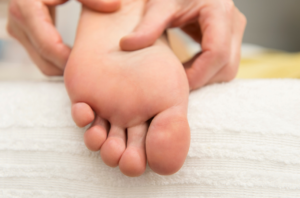 “The pain just started and now I’m changing the way I walk so I don’t step on it, and I think the muscles in my legs are getting sore because of it”
“The pain just started and now I’m changing the way I walk so I don’t step on it, and I think the muscles in my legs are getting sore because of it”
“It hurts so much to put any pressure on it. It’s been a week – I thought it would’ve got better by now, but it’s just as bad as when the pain started, maybe worse”
“I haven’t been able to walk to work or go to the gym all week – which makes me feel just as bad as the pain. It’s horrible”
These three lines all came from different patients this week with one common problem: pain at the ball of their foot. If you’re constantly on the go, forefoot pain can be debilitating and frustrating. It’s also, unfortunately, common – being one of the top problems that we help our patients get relief from here at My FootDr.
To help, we thought we’d get straight to the point of the common causes of pain at the ball of the foot, with helpful tips on what to avoid if you’re feeling the pain. Any questions? Send us a message via our Facebook page or book in at your local clinic.
1. Having A Longer Second Toe (Metatarsal)
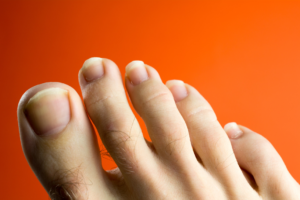 What you’re feeling: Pain at the second toe joint at the ball of the foot. Feeling beneath your foot, this joint may feel more prominent, especially if this toe has taken on a claw toe or hammertoe shape.
What you’re feeling: Pain at the second toe joint at the ball of the foot. Feeling beneath your foot, this joint may feel more prominent, especially if this toe has taken on a claw toe or hammertoe shape.
Why it’s happened: Two reasons. First, it’s the metatarsal bone that tends to be the longest, so this joint sits slightly further forward. This means that when you walk and bend the toes, it takes on much more pressure and stress instead of having it spread evenly across all the five joints. Hence a greater risk of injury and pain.
Second, our shoes are often measured to our big toe, not our second toe if it’s longer. Pushing against the end of the shoe causes the toe to bend at the joints, which can result in changes to the joint shape, and may leave the joint sitting further down and taking on more strain during walking.
You must avoid: Shoes that are too short to fit your second toe properly. Having hammertoes where you get rubbing on the joints of the second toe, and callus build-up beneath the ball of the foot at the second toe are signs your shoes aren’t fitting correctly.
2. Lesser Metatarsal Overload (Metatarsalgia)
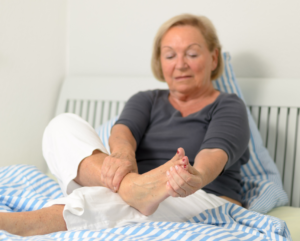 What you’re feeling: Pain and tenderness primarily over the lesser toe joints – the centre to the outer ball of the – especially during walking.
What you’re feeling: Pain and tenderness primarily over the lesser toe joints – the centre to the outer ball of the – especially during walking.
Why it’s happened: Something has happened or is happening related to your foot function that is placing greater stress on the lesser toe joints. It could be related to your footwear, particularly if you often wear high heels. It could be a bunion that may be leading to the weakened function of the big toe and so more stress is placed on the lesser toes, which makes their supporting structures more likely to fail. It could be related to arthritis, other joint problems, neuromuscular disorders, diabetes and more.
You must avoid: Hoping that the problem will go away on its own. Most cases of overloading the lesser joints have an overuse mechanical cause that needs addressing, as opposed to a one-off injury. This means it’s likely to be an ongoing and recurring problem until you get it professionally treated.
3. Morton’s Neuroma
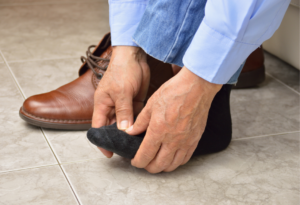 What you’re feeling: Pain beneath the long bones of the feet, close to the ball of the feet. Most likely beneath the third and fourth metatarsals, but may be elsewhere. Pain can be shooting or dull, it will likely change based on the shoes that you’re wearing, you may feel a palpable lump between the toes, and you may get symptoms of burning, tingling, numbness or pins and needles too.
What you’re feeling: Pain beneath the long bones of the feet, close to the ball of the feet. Most likely beneath the third and fourth metatarsals, but may be elsewhere. Pain can be shooting or dull, it will likely change based on the shoes that you’re wearing, you may feel a palpable lump between the toes, and you may get symptoms of burning, tingling, numbness or pins and needles too.
Why it’s happened: The lining of a nerve in your foot at a particular spot has become irritated and inflamed. This is known as neuritis.
You must avoid: Tight footwear. It will make your pain worse. Just try squeezing the sides of your feet – feel that pain? Don’t let your shoes do that all day.
4. Capsulitis or Synovitis
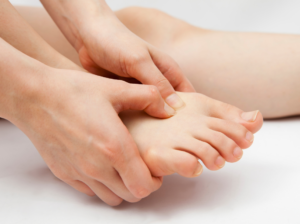 What you’re feeling: Pain and swelling at the affected joint, with potential warmth and redness. The pain will worsen when you’re walking, but dull pain may linger at other times.
What you’re feeling: Pain and swelling at the affected joint, with potential warmth and redness. The pain will worsen when you’re walking, but dull pain may linger at other times.
Why it’s happened: Either the joint capsule of one or more joints at the ball of your foot, or the synovium that sits inside the joint capsule (or both) have become injured and inflamed.
You must avoid: Walking long distances, participating in sports, and continuing to load the ball of your foot before you get some professional measures in place to offload the damaged joints. Otherwise, when you walk, you’ll just be further aggravating and worsening the injury, prolonging your recovery time, and leading to it becoming a chronic, ongoing problem.
5. Plantar plate tear
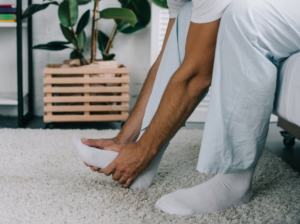 What you’re feeling: Feeling like you’re “walking on the bones of your feet”. Noticing a ‘V’ between two toes where the toes look like they have separated or moved out of alignment. Pain and swelling at one or more joints which is worsened by bending the toe upwards. Swelling or redness may be present.
What you’re feeling: Feeling like you’re “walking on the bones of your feet”. Noticing a ‘V’ between two toes where the toes look like they have separated or moved out of alignment. Pain and swelling at one or more joints which is worsened by bending the toe upwards. Swelling or redness may be present.
Why it’s happened: The plantar plate ligament that runs along the bottom of the ball of your foot and connects the joints has been overloaded or strained, leading to a tear.
You must avoid: Ignoring it – we often see patients that have permanent ‘V’ signs and other problems due to not managing their plantar plate injury. Sometimes, one of the joints sits significantly higher or lower and causes a number of other problems.
6. Turf toe
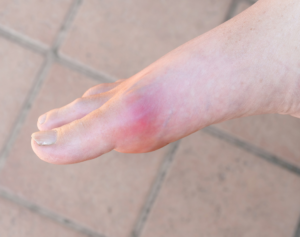 What you’re feeling: Like you’ve sprained your big toe. Pain, swelling, and limited movement in the big toe.
What you’re feeling: Like you’ve sprained your big toe. Pain, swelling, and limited movement in the big toe.
Why it’s happened: You’ve excessively or forcefully bent your big toe upwards and damaged the ligaments around the big toe. This could be from a forceful push off the ground when starting a sprint, holding your ground in a rugby scrum, performing a gymnastic or dance move, and anything else that bends your big toe in this way.
You must avoid: Continuing to bend your big toe upwards like this – instead, tape your big toe to your second toe and book in to your podiatrist to have it treated the right way – especially when you’ve got sports to get back to.
7. Sesamoiditis
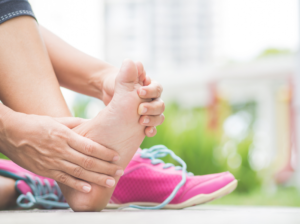 What you’re feeling: Pain at or beneath the big toe at the ball of the foot, particularly when putting any weight on it like running. Redness and swelling may also be present, and the severity of the pain can vary depending on whether you’ve irritated the sesamoids or it has progressed to a sesamoid fracture.
What you’re feeling: Pain at or beneath the big toe at the ball of the foot, particularly when putting any weight on it like running. Redness and swelling may also be present, and the severity of the pain can vary depending on whether you’ve irritated the sesamoids or it has progressed to a sesamoid fracture.
Why it’s happened: The two small sesamoid bones that sit beneath your big toe joint at the ball of the foot have become irritated or injured due to overuse and repetitive impact.
You must avoid: Running. This is a sure way to continue to overload your sesamoids and significantly worsen the damage – and your recovery time.
Treating Pain At The Ball Of The Foot
While we’ve given you six common causes of forefoot pain above, truthfully there are plenty more causes, ranging from bursitis to stress fractures – and even to corns and warts on the bottom of your feet. This is why it’s crucial to get an accurate diagnosis from your podiatrist – saving yourself time and pain trying to treat the wrong problem.
My FootDr has clinics around Australia dedicated to helping you stay healthy on your feet. Book your appointment online with our experienced and knowledgeable team by clicking here or call us on 1300 FOOT DR.


